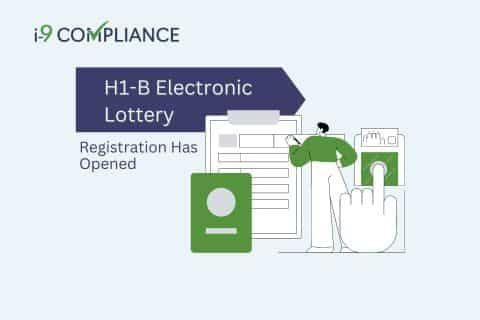Registration For H-1B Electronic Lottery Has Opened

March 6, 2024, marked the day the fiscal year 2025 H-1B electronic lottery opened for initial registrations. As such, employers may now begin submitting registrations for their chosen applicants. However, this year’s process has significantly changed.
Employers should quickly ensure they submit their applications within the registration period. For employers new to the process, the H-1B electronic lottery refers to the selection process U.S. Citizenship and Immigration Services (USCIS) uses. The USCIS relies on it when the demand for these visas exceeds the 85,000-visa annual cap designated by Congress.
The agency performs a randomized electronic selection process to decide which registrations may proceed to the application process. Only employers selected in the electronic lottery may apply for their chosen cap-subject workers. The period for submitting these initial registrations began at 12 PM Eastern Time on March 6, 2024, and will continue through the same time on March 22, 2024.
In addition, the USCIS has introduced several changes for this cap lottery season. First, all registrants must submit a valid passport or other travel documents when registering. Next, all employers and their chosen workers must use a shared “myUSCIS organizational account.” The USCIS launched this requirement on February 28, 2024.
Involved parties may use this account with other representatives, allowing everyone involved in the H-1B registration to collaborate during the process. Another change concerns the previous fiscal year’s suspected fraud and abuse. Previously, the process allowed several potential employers to submit registrations for the same worker. The USCIS allowed each entry to count toward the lottery.
This permission resulted in more than 400,000 duplicate registrations for the same individuals among the 759,000 registrations submitted. This discovery raised many complaints and serious concerns about participants gaining an unfair advantage. This concern addressed the possibility of employers working together to ensure specific beneficiaries succeed. Since then, the USCIS has participated in extensive fraud investigations.
Now, the process is beneficiary-centric. This means the USCIS will only permit an individual to enter the lottery once, so the number of submitted registrations does not matter.
The employment eligibility verification process (Form I-9) is another area of compliance that faces rapid changes. All employers must complete this process regardless of their workers’ immigration or citizenship status. The most effective way for employers to manage this process is by using an electronic I-9 management system. This system can guide them through every step, simplify storage and organization, and integrate with E-Verify.
Ensure compliance today by switching to an electronic I-9 management tool with I-9Compliance.